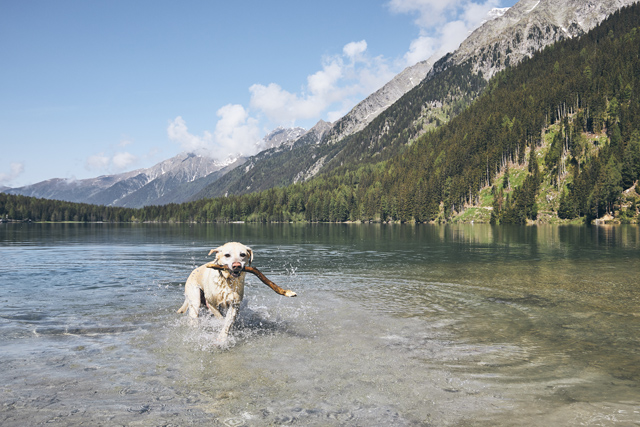
Instead of accompanying their owners to faraway places, our canine companions habitually spend their vacations at a boarding kennel or with a dog sitter. But you don’t have to leave your pet behind to explore Europe. Look around and you are likely to find dogs in restaurants, on trains, and on the beach.
Every country is different
Most are very dog friendly, and taking furry friends along may actually be easier than trying to find a place for them to stay behind. There are various websites, like www.hundeurlaub.de, that make finding and booking a dog friendly accommodation easy.
Dogs are generally allowed to roam on the beaches but some countries restrict their beaches during the main travel season in July and August. During that time, dog owners are asked to seek out specially designated beaches where their pets may roam and play.
Eastern Europe is also rather dog-friendly, but dogs are often seen as working and guard dogs and might be treated differently. Tuscany and Croatia are also good destinations for traveling with dogs.
In southern Europe, dog owners may have more difficulty finding dog friendly hotels and beaches. Unlike in the northern countries, restaurants in the south usually limit dogs to outside patios.
A tricky country is Denmark. Although the people there are very friendly toward dogs, the law is not. Dogs resembling one of the restricted dog breeds might get confiscated and euthanized.
When booking a hotel, travelers need to announce their intention to bring a dog in advance, even if the hotel says it allows dogs. If the hotel’s website doesn’t state whether dogs are allowed, you can just call and ask before making a reservation. Hotels do tend to charge an extra cleaning fee.

Regulations for dogs in Europe
For any travel abroad, dogs need to have a microchip implant. That chip needs to adhere to the European standard, otherwise the owner needs to take along a proper chip scanner. Dogs also have to have a current rabies vaccination that needs to be noted in an EU pet passport, which is available at any German vet.
Although rabies is the only required vaccine for entering a European country, there may be other suggested vaccines to protect pets from foreign viruses, so it is worth checking with a veterinarian beforehand.
For more information on entrance requirements, such as antibody tests to avoid quarantine, visit the portal site of the European Union.
Road trips are particularly pup-friendly. When traveling by car don’t forget that Germany’s law requires dogs in cars to be secured in either a kennel or with a seatbelt or safety net.
If a dog gets car sick, withholding food before the trip may help.
Plan on making a stop at least every three hours and give the dog plenty of water. Older or sick dogs should be checked by a vet before going on any trip. However, even if the car ride takes a bit longer due to more stops, for most dogs, staying at a kennel is more stressful than a four- or five-hour car ride.
So next time you plan a trip, take a bit of time and find a place where your best friend can accompany you. You won’t regret it.


